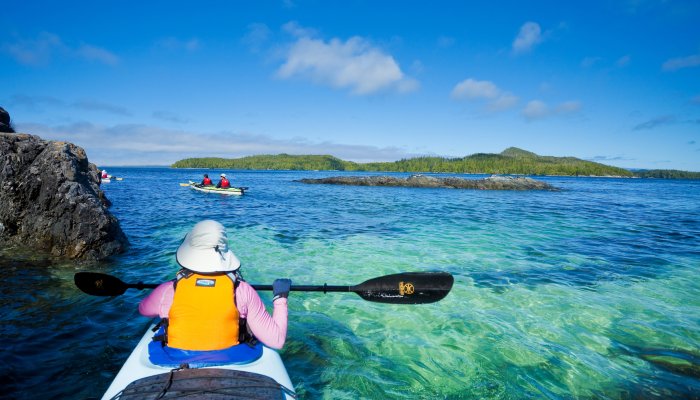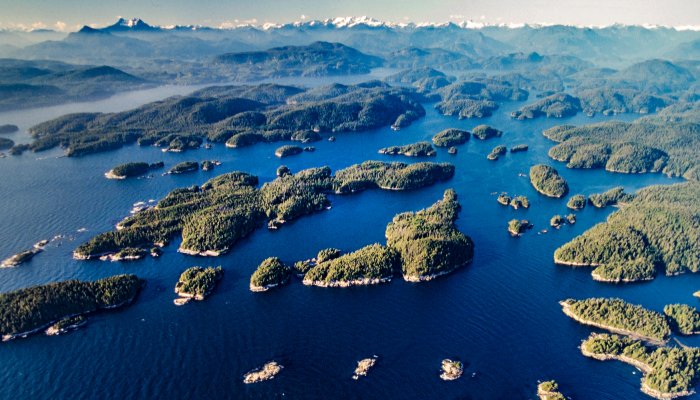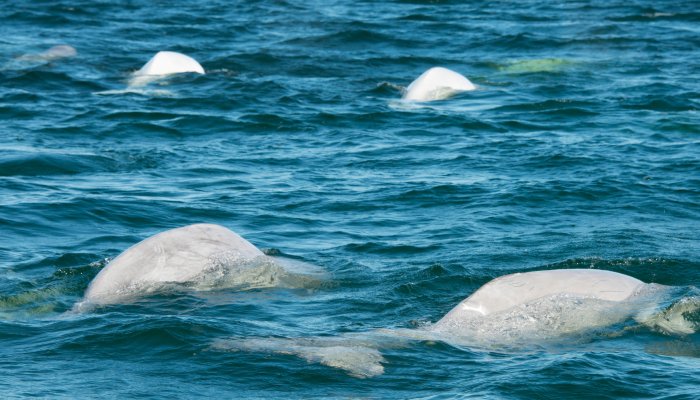The Penguins of Antarctica
Aside from its spellbinding landscapes and iceberg-dotted waters, what really sets Antarctica apart as a must-visit destination is its unique wildlife encounters. Of its abundant birdlife, none is more iconic than the penguin. But with more than a dozen different species, which ones are you likely to see on a once-in-a-lifetime Antarctic cruise and sea kayak adventure?
Of the world’s 18 penguin species, five live in Antarctica while several others are found in the sub-Antarctic waters and are regularly spotted on Antarctic cruises. In this article, we’ll introduce some of the species you may be lucky enough to see and what it is that sets them apart. From highly skilled divers to kleptomaniacs who steal nesting stones, the world of Antarctic penguins is like no other.
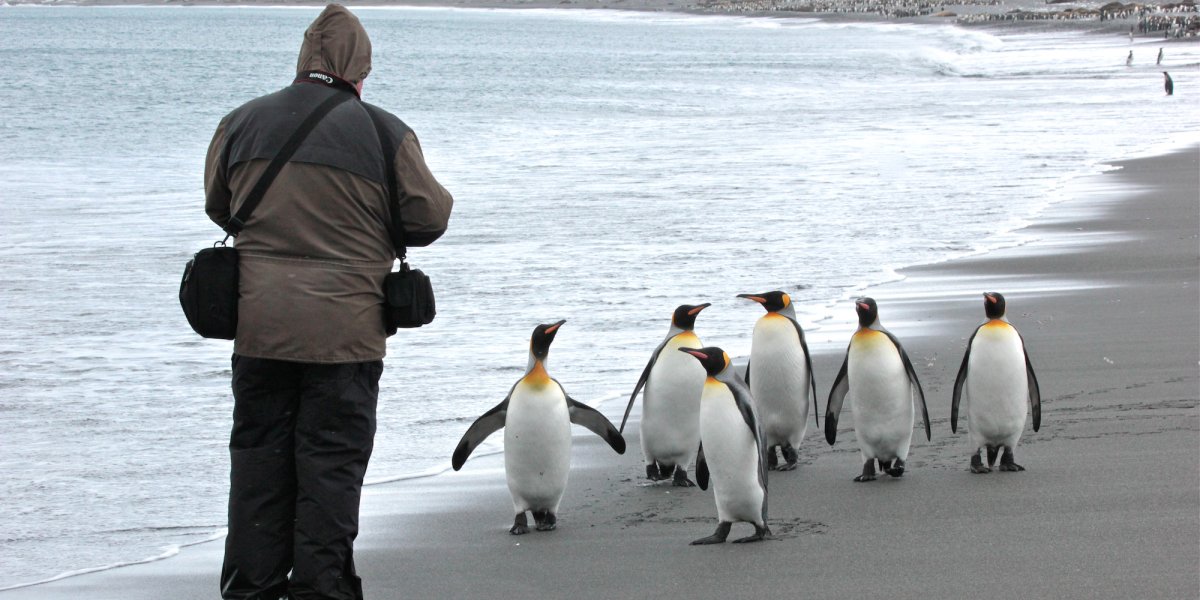
Emperor penguin (Aptenodytes forsteri)
Endemic to Antarctica, the emperor penguin is not only the tallest living penguin species (they can reach around 40 inches in height) but it’s also the heaviest, weighing anywhere between 50 and 100 pounds. Emperor penguins have a regal appearance and gold patches around their chest and heads, with a sharp delineation between their black upper bodies and white chests.
Emperor penguins are the only penguin species that breed during the Antarctic winter, with their long nesting period taking place during the continent’s harshest weather conditions. To reach breeding colonies, the penguins trek up to 75 miles where females lay a single egg. This egg is then incubated by the male while the female heads to the sea to feed, only to return with food that is regurgitated for her young. The male then returns to the sea, with the parents taking turns in their caring role as the offspring grow.
Emperor penguins are powerful swimmers, with the ability to dive to 1,850 feet and stay submerged for up to 20 minutes as they hunt for fish, crustaceans, and squid. Several adaptations enable this to happen, including the penguin’s ability to reduce its metabolism and shut down non-essential organs to survive freezing temperatures. Emperor penguins also use huddling to survive the harsh Antarctic conditions, with individuals rotating positions between the cold exterior and warm interior.
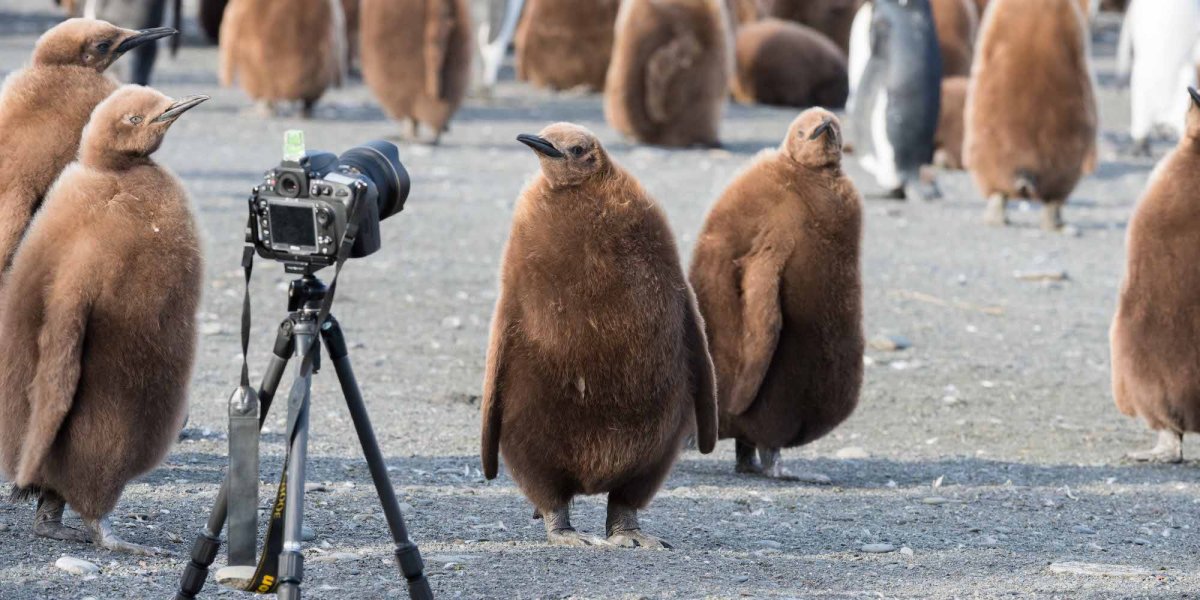
King penguin (Aptenodytes patagonicus)
The second-largest species of penguin is the king penguin, which is similar in appearance to the emperor penguin with its golden patches. King penguins can be found in the northern reaches of Antarctica and on sub-Antarctic islands, as well as in parts of Patagonia. Now protected, they were once hunted for their lucrative blubber, meat, and feathers.
King penguins feed mainly on krill, squid, and lanternfish and they have been recorded diving up to 1,000 feet in search of food (all while avoiding predators such as leopard seals and orcas). They are known for flat-bottom diving, with the birds diving to a certain depth, then staying there for around five minutes to hunt.
King penguins have long breeding cycles and, like the emperor penguin, they incubate their eggs with their feet. During this time, they can be highly territorial. A month or so after the chicks are born and can keep themselves warm, they form creches. These are watched over by a handful of adult birds while the parents go out to forage.
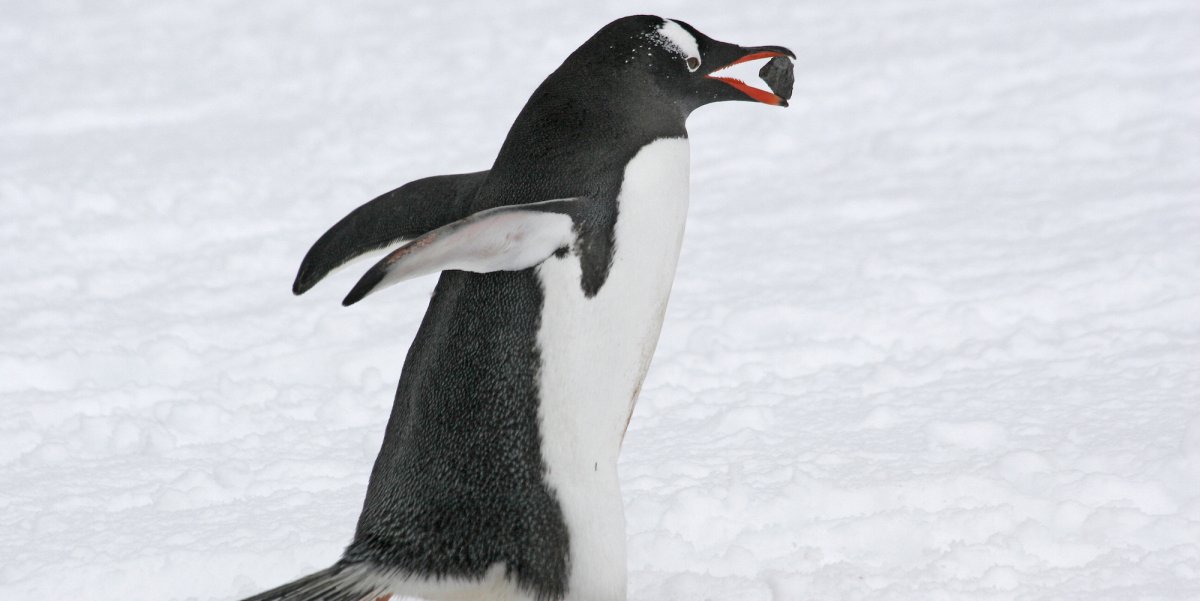
Gentoo penguin (Pygoscelis papua)
With their red-orange bills and white eye patches, gentoo penguins are easily distinguishable from other penguins. It is the third largest of Antarctica’s penguins, growing up to around 35 inches in height and weighing anywhere between 10 and 20 pounds. The reason for the name “gentoo” remains unclear, with some believing it originated from the Portuguese term “gentio” (meaning “pagan” or “gentile”) while others say it derived from the bird’s nickname “Johnny penguin”.
Gentoos breed on ice-free surfaces on sub-Antarctic islands, including the Falklands, South Georgia, and Macquarie Island. They are monogamous and infidelity can result in individuals being banished from the colony. Gentoo penguins create their nests from circular piles of stones, with males known to win the hearts of females by gifting them a favorable stone. After hatching, chicks will remain with their parents for around a month before joining the local creche.
Gentoo penguins can dive faster than any other diving bird, with speeds of up to 22 miles per hour recorded. They feed mainly on crustaceans, fish, and shrimps, with the high salt content of their diet managed via a gland above the eyes, which releases a highly saline solution from the body. Gentoos are known for their loud trumpeting calls, which they emit with their head thrown back.
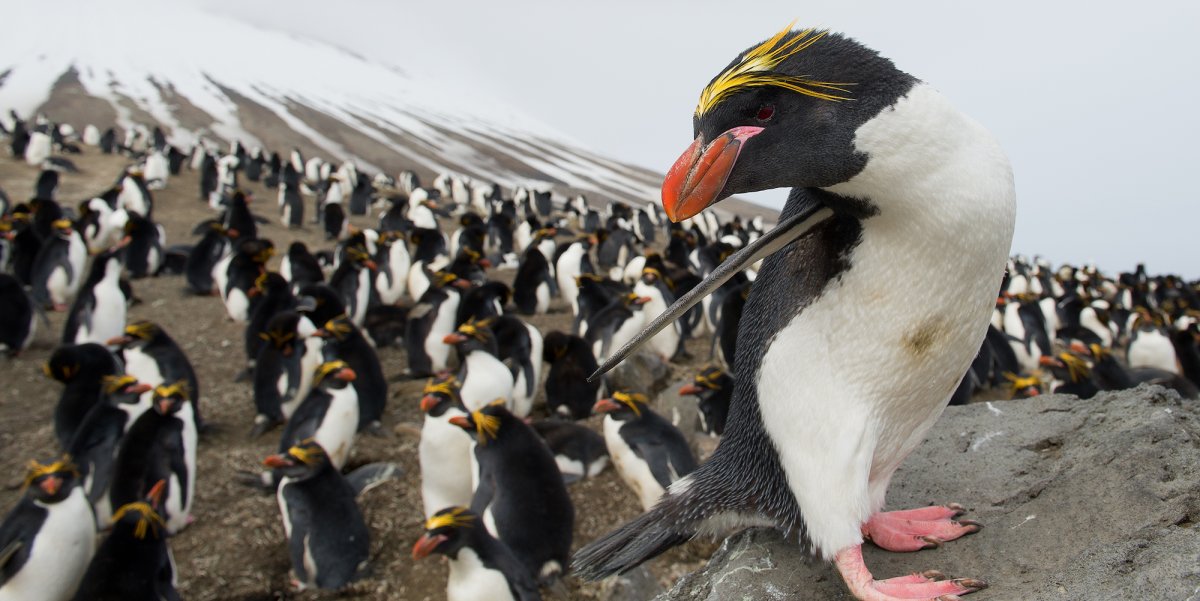
Macaroni Penguin (Eudyptes chrysolophus)
Found from the sub-Antarctic islands to the Antarctic Peninsula, the macaroni penguin is the most abundant penguin species in the world, with around 18 million individuals in existence. They are instantly recognizable due to their bright yellow crests which resemble a macaroni wig, hence the name “macaroni penguin”. Clearly delineated from the black face and upper is the bird’s white belly.
As highly social birds, macaroni penguins form large nesting colonies on rocky cliffs where thousands of breeding birds congregate. While they lay two eggs, only the larger one usually hatches and the parents only raise one chick each year. After the summer breeding period, macaroni penguins return to the ocean for up to six months, with some recorded as traveling up to 6,200 miles during that period.
Due to the dense nature of their colonies, macaroni penguins are known for their fighting displays, which can include locking bills and wrestling one another. In order to avoid unwanted conflict, birds can also be seen doing what is known as the “slender walk”, which involves moving through the colony with their feathers flat, flippers at the front of the body, and heads hunched over.
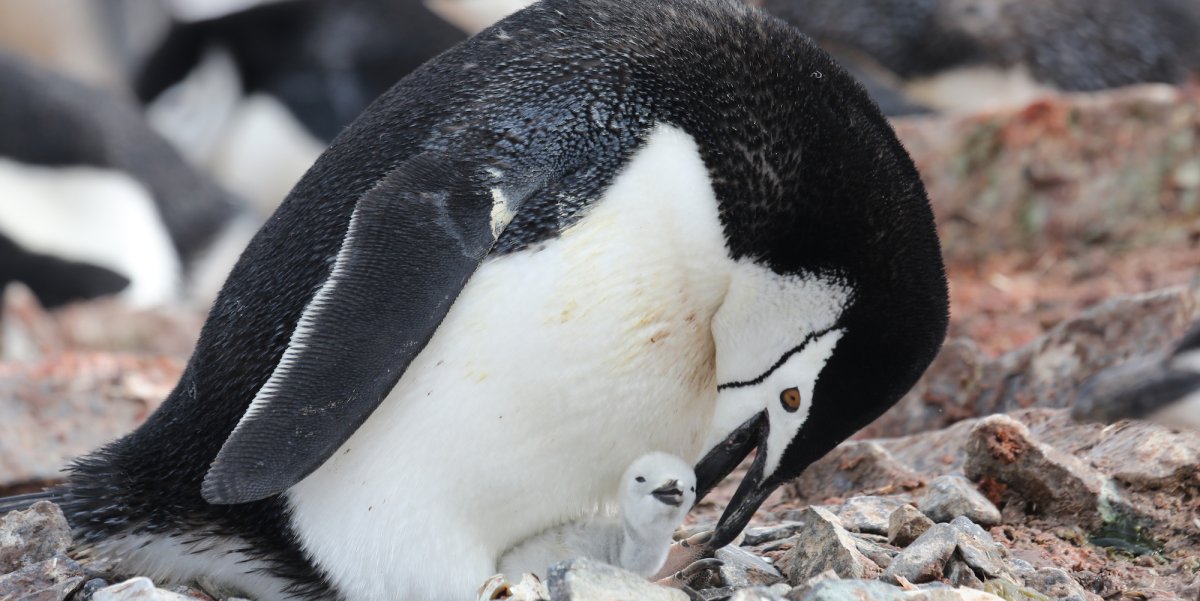
Chinstrap Penguin (Pygoscelis antarcticus)
Named for the distinctive black band that runs beneath their chin, these small penguins are believed to be the most abundant penguin in Antarctica. They grow to around 30 inches in height and weigh between 7 and 12 pounds, with males usually taller and heavier than females. Chinstrap penguins are notable for their short, stumpy legs, which result in their unique waddle.
Chinstrap penguins breed in Patagonia, South Georgia, and the South Sandwich Islands where they prefer high, rocky, and ice-free slopes. They return to the same colony each year and build circular nests from stones. Two eggs are laid and incubated, with chicks gaining their adult feathers and heading out to sea at around two months of age.
Among the world’s most famous chinstrap penguins were Roy and Silo, two males who tried in vain to hatch a rock in New York City’s Central Park Zoo. Eventually, they were given a fertile egg to rear, with their offspring named “Tango”. Despite this endearing story, chinstrap penguins are considered the most ill-tempered and aggressive penguin species!
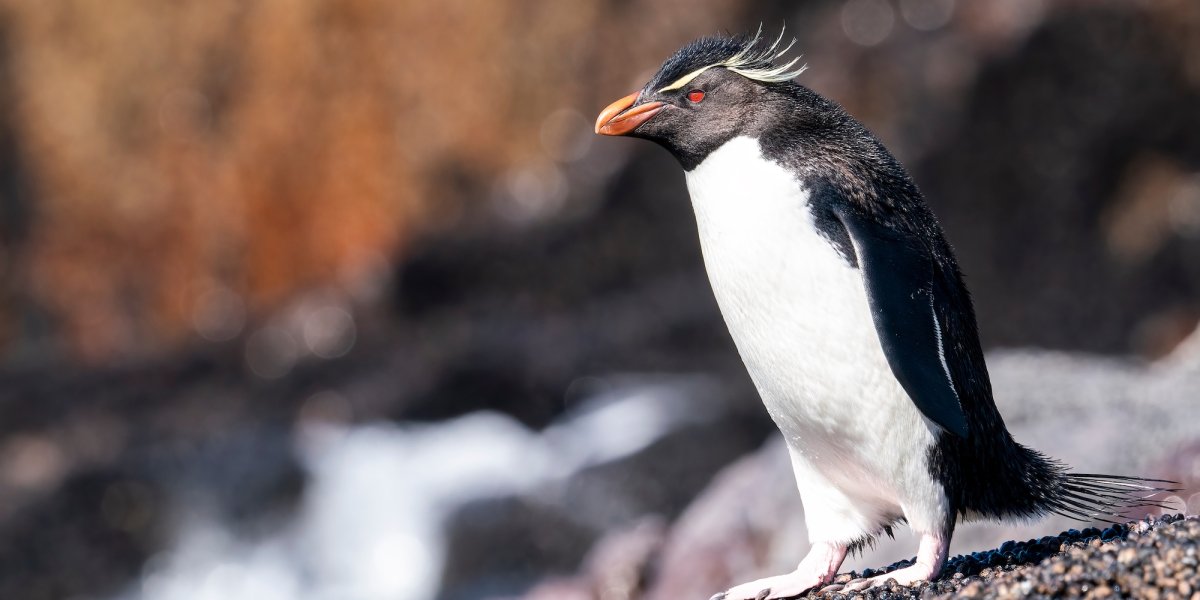
Southern Rockhopper Penguin (Eudyptes chrysocome)
One of three subspecies of rockhopper penguins, this diminutive penguin can be found around the southern coast of South America and the sub-Antarctic islands. It features a distinctive yellow and black crest and ruby-red eyes that stand out against its black head. Southern rockhopper penguins can reach a height of up to 23 inches and weigh between 4.5 and 7.5 pounds.
As its name suggests, the rockhopper penguin prefers rocky habitats where it congregates to breed in vast colonies that number in the hundreds of thousands. They return to the same breeding ground each year and incubate just one egg, although two are laid. As with other crested penguins, the smaller egg is usually lost during the incubation period in favor of the larger one.
Southern rockhopper penguins have complex foraging behaviors, which are determined by the availability of prey and the abundance of sea ice. They are known to spend up to 15 hours out diving, with penguins in the less-abundant sub-Antarctic regions diving for longer periods than those in warmer waters.
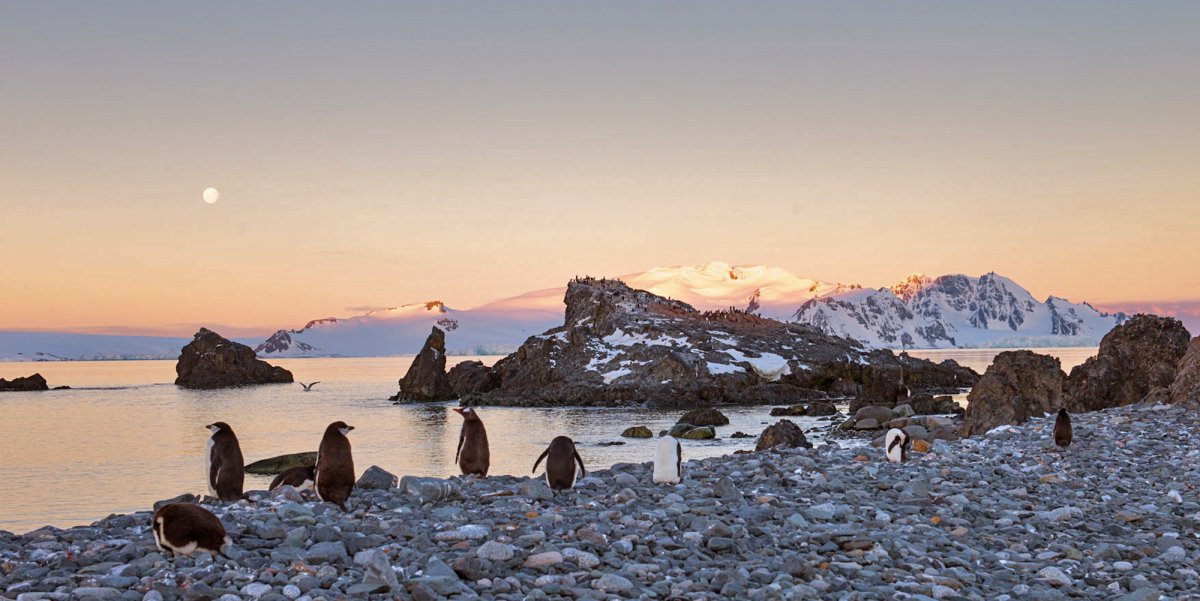
Adelie Penguin (Pygoscelis adeliae)
Found along the Antarctic coastline, Adelie penguins were named by two 19th-century French naturalists after the area they were found: “Terre Adélie”. They are the most “classic” looking of the Antarctic penguins, with their black heads and backs juxtaposed against white bellies and a distinctive eye ring.
Adelie penguins are highly adapted to the chilly temperatures of the continent and breed further south than any other penguin. Due to the harsh conditions, they have a relatively short breeding season, with a month-long incubation period followed by just 22 days of nest rearing before the young join a creche. Males and females share the nesting duties, with one going out to feed while the other tends to the young.
Adelie penguins living in the Ross Sea have been recorded migrating around 8,100 miles each year. While traveling from their summer breeding colonies to their winter foraging grounds, they are tasked with avoiding predators such as leopard seals and orcas. On land, they can waddle more than 30 miles from inland nesting sites to reach the open water and have been known to leap up to 10 feet when returning from the water to land.

